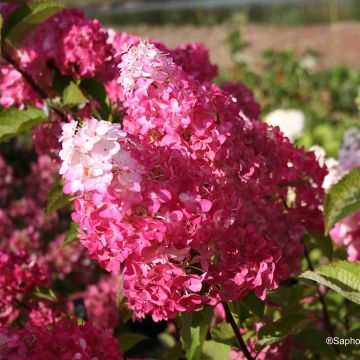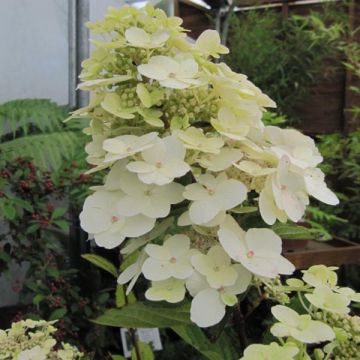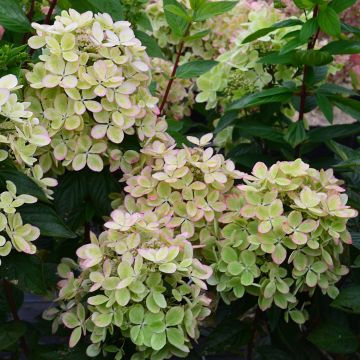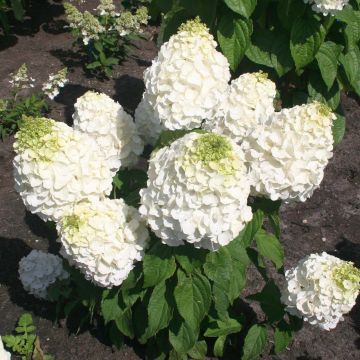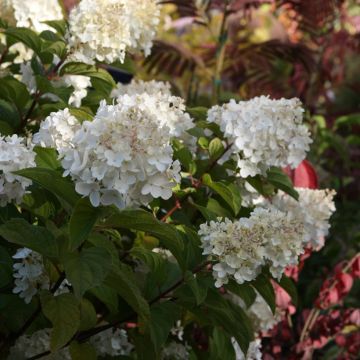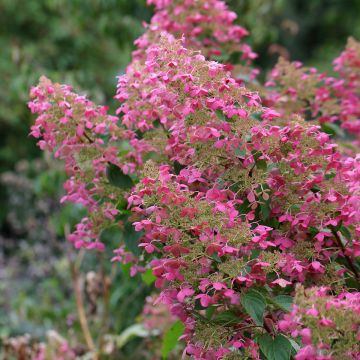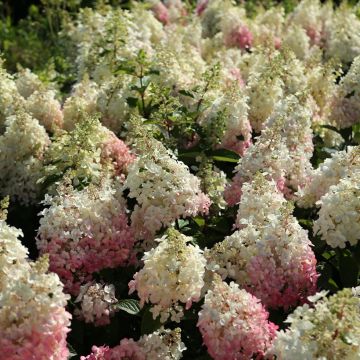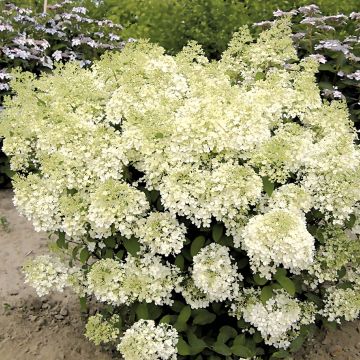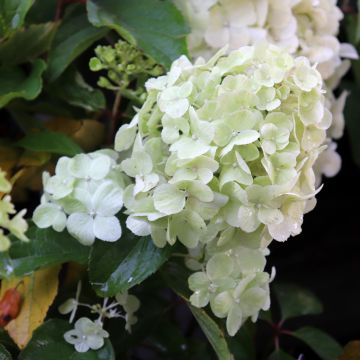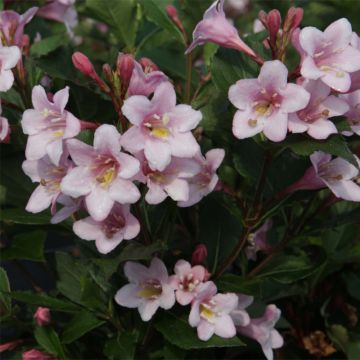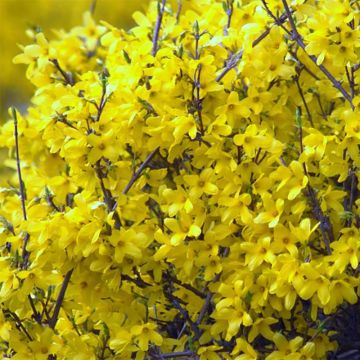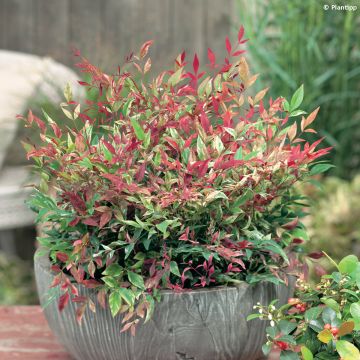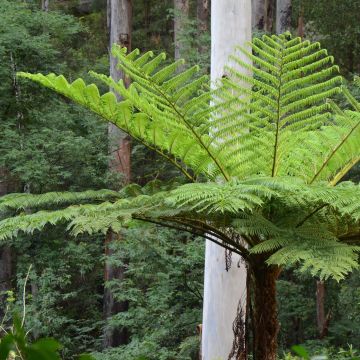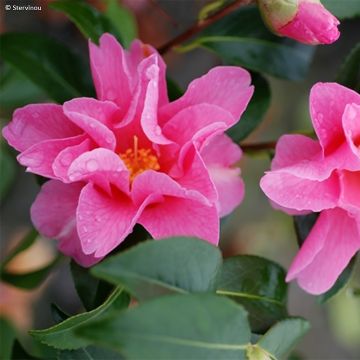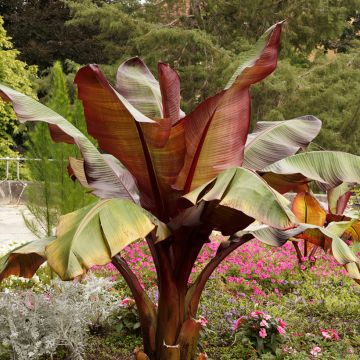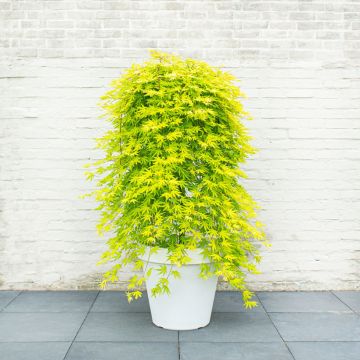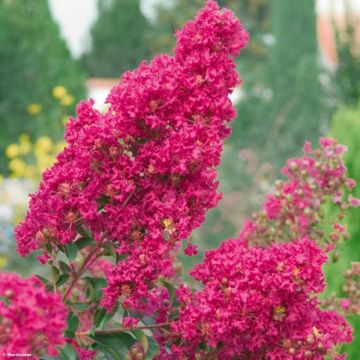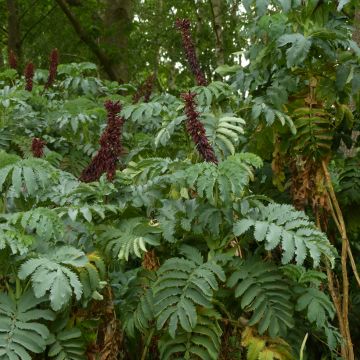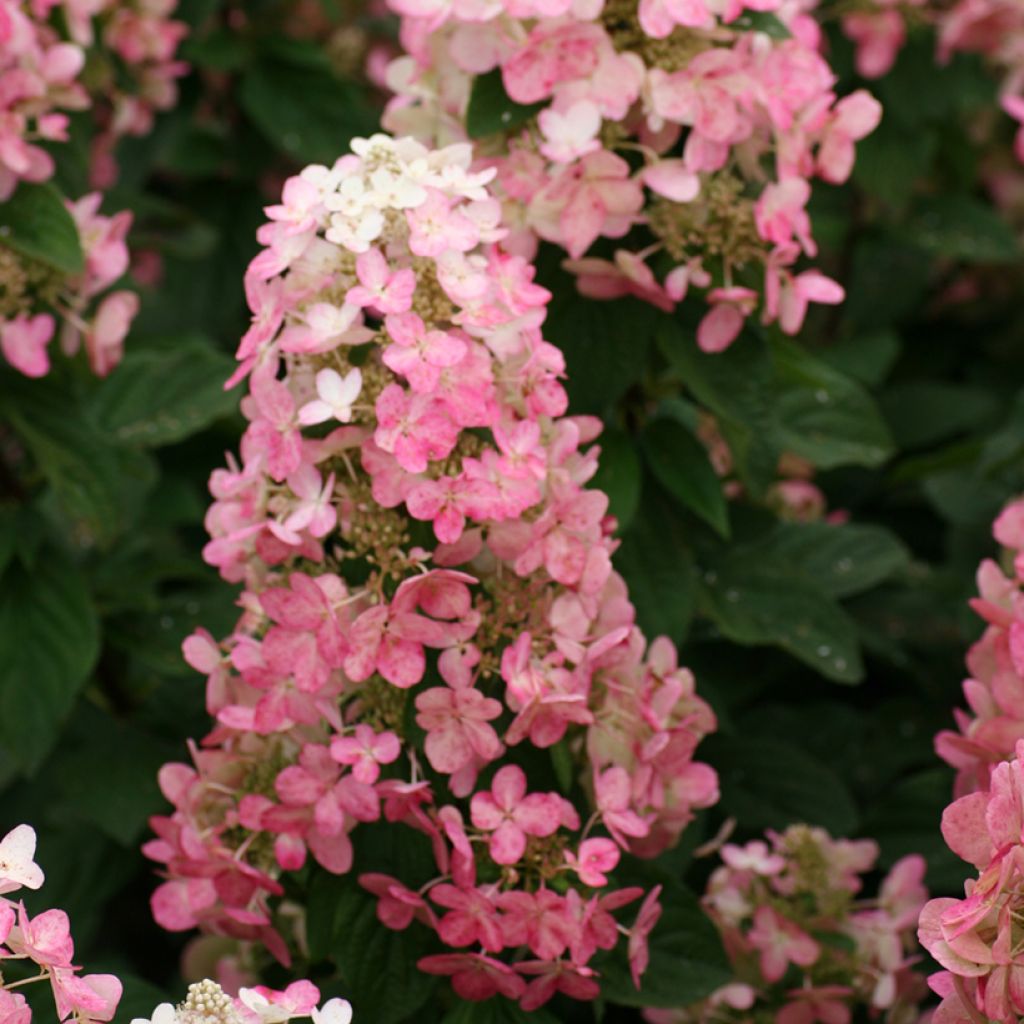

Hydrangea paniculata Magical Fire
Hydrangea paniculata Magical Fire
Hydrangea paniculata 'Bokraplume' FIRE ( MAGICAL® series )
Panicled Hydrangea, PeeGee Hydrangea, Bokraplume
This item cannot be shipped to the selected country
Delivery charge from €5.90
More information
Schedule delivery date,
and select date in basket
This plant carries a 24 months recovery warranty
More information
We guarantee the quality of our plants for a full growing cycle, and will replace at our expense any plant that fails to recover under normal climatic and planting conditions.
From €5.90 for pickup delivery and €6.90 for home delivery
Express home delivery from €8.90.
Does this plant fit my garden?
Set up your Plantfit profile →
Description
The Hydrangea paniculata 'Magical Fire', known by its cultivar 'Bokraplume', is a variety of panicled hydrangea whose flowering is a fireworks display of intense colours. From July, the conical panicles bloom in pure white before evolving into a dark pinkish-red and then a deep crimson red by September. They also emit a slight fruity fragrance. This deciduous shrub with long-lasting flowering is planted in borders, as an isolated specimen, or in large pots on a terrace. It requires a sunny exposure to fully express the vibrancy of its colours.
The 'Magical Fire' variety has a dense and upright habit. The main branches are upright, while the secondary branches are slightly arched. At maturity, this variety does not exceed 1.60 m in height and 1.20 m in width, with a relatively rapid growth. In July, the shrub produces numerous conical panicles on the current year's branches, which are quite compact and 20-25 cm long. They consist primarily of fertile florets, single and transition from white to deep pink and dark crimson in autumn when exposed to sunlight. This inflorescence, which includes a few tiny fluffy sterile florets, barely bends the youngest branches. Magical® Fire has a well-branched habit and very dark-coloured branches. The branches bear ovate leaves that are fairly dark green, sometimes tinged with purple, 5 to 15 cm long and 5 to 7 cm wide, with finely dentate edges. They turn yellow in autumn before disappearing in winter. Panicled hydrangeas are less susceptible to late frosts, as they usually flower on the current year's growth.
Hydrangea paniculata prefers non-scorching sunlight and can tolerate some limestone in the soil. 'Magical Fire' has a fast growth rate without taking up too much space in a small garden. It is a colourful variety that can be planted as a standalone specimen, under a window, or against a porch. It is versatile and can also be used in a low hedge or at the edge of a woodland, mixed with other hydrangeas or perpetual roses. You can also combine it with ornamental grasses such as Miscanthus, Panicum virgatum Squaw, and Stipa to add lightness. It can be planted in borders as a backdrop for summer perennials such as daylilies and asters. It can also be grown in a large container on the terrace with regular fertilisation and watering.
Report an error about the product description
Plant habit
Flowering
Foliage
Botanical data
Hydrangea
paniculata
'Bokraplume' FIRE ( MAGICAL® series )
Hydrangeaceae
Panicled Hydrangea, PeeGee Hydrangea, Bokraplume
Hydrangea paniculata FIRE ( MAGICAL® series ), Hydrangea paniculata 'Bokraplume' MELANGE, Hydrangea paniculata MAGICAL FIRE, Hydrangea paniculata 'Bokraplume'
Cultivar or hybrid
Other Hydrangea Paniculata
Planting and care
The Hydrangea paniculata 'Magical Fire' is not very demanding in terms of the nature of the soil, as long as it is not too heavy, dry, and chalky. It requires a sunny, non-burning exposure or semi-shade. At planting, install it in deeply worked soil improved with leaf compost. A good base fertiliser (blood, fish and bone) will promote your plant's growth and nourish it without risk of burning. If your soil tends to be dry, mix our water retainer and stockosorb with the soil, fill the planting hole, and provide a watering basin on the surface.
At the end of summer, we advise you not to cut the dry panicles, which will protect the terminal shoots of the branches in winter. Cut all the dry flowers at the end of February or on the first warm days. Their spring vegetation is quite late.
Hydrangea Paniculata: These shrubby hydrangeas with elongated inflorescences are more water-efficient and easily established even in non-acidic soil. They bloom generously from June until the first frost. Planted in the sun, their inflorescences colour beautifully in autumn.
The Hydrangea paniculata 'Magical Fire' should be pruned at the end of winter to produce more inflorescences and maintain a dense habit. Except for intentionally limiting the expansion of the bush that has become too large, care should be taken not to remove the 2-year-old branches, as this would compromise the plant's development.
Planting period
Intended location
Care
This item has not been reviewed yet - be the first to leave a review about it.
Shrubs for pots
Haven't found what you were looking for?
Hardiness is the lowest winter temperature a plant can endure without suffering serious damage or even dying. However, hardiness is affected by location (a sheltered area, such as a patio), protection (winter cover) and soil type (hardiness is improved by well-drained soil).

Photo Sharing Terms & Conditions
In order to encourage gardeners to interact and share their experiences, Promesse de fleurs offers various media enabling content to be uploaded onto its Site - in particular via the ‘Photo sharing’ module.
The User agrees to refrain from:
- Posting any content that is illegal, prejudicial, insulting, racist, inciteful to hatred, revisionist, contrary to public decency, that infringes on privacy or on the privacy rights of third parties, in particular the publicity rights of persons and goods, intellectual property rights, or the right to privacy.
- Submitting content on behalf of a third party;
- Impersonate the identity of a third party and/or publish any personal information about a third party;
In general, the User undertakes to refrain from any unethical behaviour.
All Content (in particular text, comments, files, images, photos, videos, creative works, etc.), which may be subject to property or intellectual property rights, image or other private rights, shall remain the property of the User, subject to the limited rights granted by the terms of the licence granted by Promesse de fleurs as stated below. Users are at liberty to publish or not to publish such Content on the Site, notably via the ‘Photo Sharing’ facility, and accept that this Content shall be made public and freely accessible, notably on the Internet.
Users further acknowledge, undertake to have ,and guarantee that they hold all necessary rights and permissions to publish such material on the Site, in particular with regard to the legislation in force pertaining to any privacy, property, intellectual property, image, or contractual rights, or rights of any other nature. By publishing such Content on the Site, Users acknowledge accepting full liability as publishers of the Content within the meaning of the law, and grant Promesse de fleurs, free of charge, an inclusive, worldwide licence for the said Content for the entire duration of its publication, including all reproduction, representation, up/downloading, displaying, performing, transmission, and storage rights.
Users also grant permission for their name to be linked to the Content and accept that this link may not always be made available.
By engaging in posting material, Users consent to their Content becoming automatically accessible on the Internet, in particular on other sites and/or blogs and/or web pages of the Promesse de fleurs site, including in particular social pages and the Promesse de fleurs catalogue.
Users may secure the removal of entrusted content free of charge by issuing a simple request via our contact form.
The flowering period indicated on our website applies to countries and regions located in USDA zone 8 (France, the United Kingdom, Ireland, the Netherlands, etc.)
It will vary according to where you live:
- In zones 9 to 10 (Italy, Spain, Greece, etc.), flowering will occur about 2 to 4 weeks earlier.
- In zones 6 to 7 (Germany, Poland, Slovenia, and lower mountainous regions), flowering will be delayed by 2 to 3 weeks.
- In zone 5 (Central Europe, Scandinavia), blooming will be delayed by 3 to 5 weeks.
In temperate climates, pruning of spring-flowering shrubs (forsythia, spireas, etc.) should be done just after flowering.
Pruning of summer-flowering shrubs (Indian Lilac, Perovskia, etc.) can be done in winter or spring.
In cold regions as well as with frost-sensitive plants, avoid pruning too early when severe frosts may still occur.
The planting period indicated on our website applies to countries and regions located in USDA zone 8 (France, United Kingdom, Ireland, Netherlands).
It will vary according to where you live:
- In Mediterranean zones (Marseille, Madrid, Milan, etc.), autumn and winter are the best planting periods.
- In continental zones (Strasbourg, Munich, Vienna, etc.), delay planting by 2 to 3 weeks in spring and bring it forward by 2 to 4 weeks in autumn.
- In mountainous regions (the Alps, Pyrenees, Carpathians, etc.), it is best to plant in late spring (May-June) or late summer (August-September).
The harvesting period indicated on our website applies to countries and regions in USDA zone 8 (France, England, Ireland, the Netherlands).
In colder areas (Scandinavia, Poland, Austria...) fruit and vegetable harvests are likely to be delayed by 3-4 weeks.
In warmer areas (Italy, Spain, Greece, etc.), harvesting will probably take place earlier, depending on weather conditions.
The sowing periods indicated on our website apply to countries and regions within USDA Zone 8 (France, UK, Ireland, Netherlands).
In colder areas (Scandinavia, Poland, Austria...), delay any outdoor sowing by 3-4 weeks, or sow under glass.
In warmer climes (Italy, Spain, Greece, etc.), bring outdoor sowing forward by a few weeks.

































